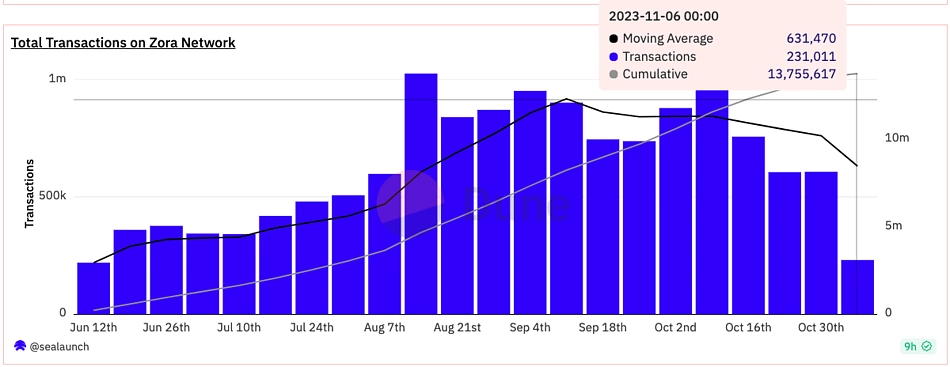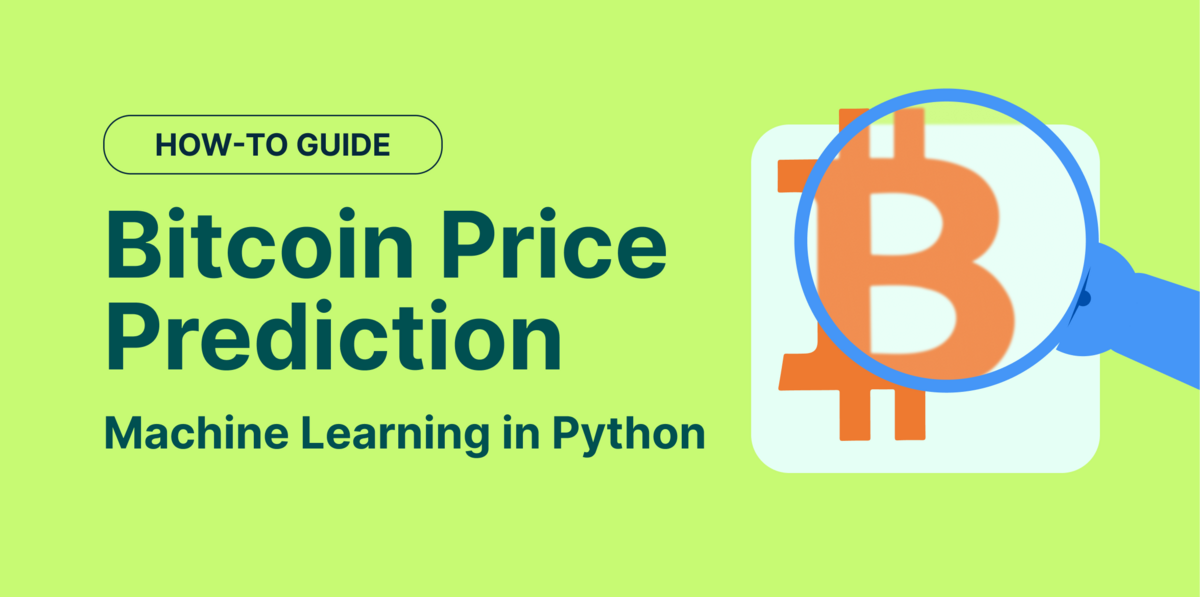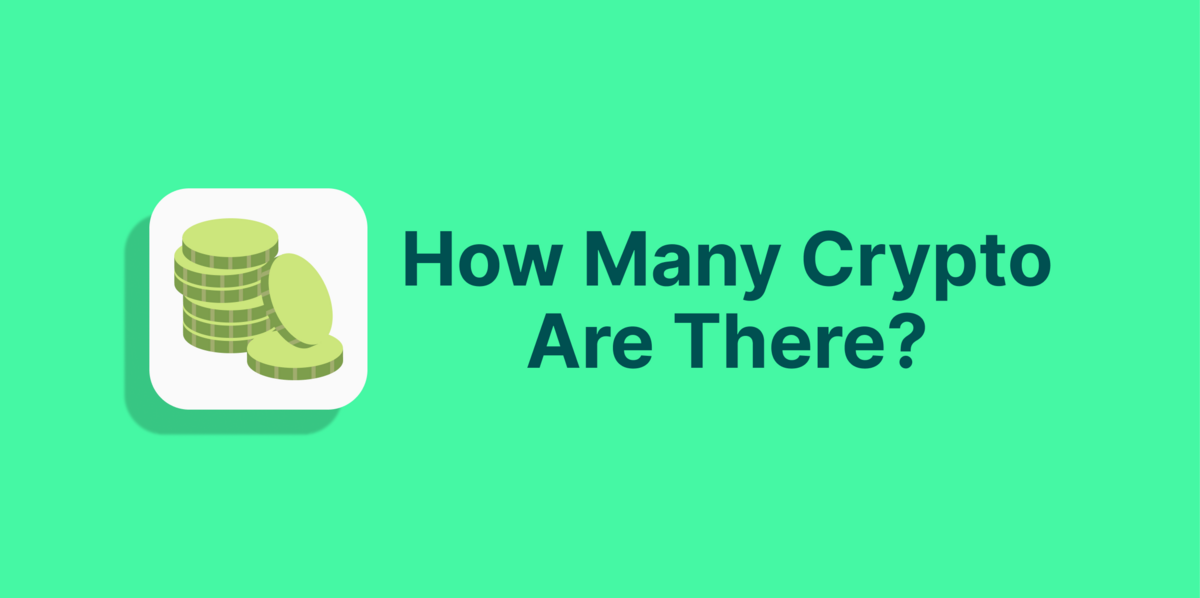What Is Zora and Zora Network?
Zora is a decentralized creator-focused protocol where users can buy, sell, and create permissionlessly. Zora is an NFT and media marketplace, and has recently deployed the Zora Network, a fast, cost-efficient and scalable Layer 2 to bring media on-chain. However, Zora does not run the Zora Network, and the Zora Network operates as a decentralized blockchain.
Key Takeaways
-
Zora is a creator-centric decentralized NFT platform, empowering artists to capture a share of the resale value of their work.
-
Zora encourages community-driven value determination for digital assets, with features like auction houses, collectives and communities.
-
Zora Network, launched in 2023, is an EVM-compatible Layer 2 blockchain solution, with an emphasis to support tokenized media.
-
Zora Network aims to offer NFT creators and buyers scalability, speed, and cost efficiency.

Zora is a creator-centric marketplace, with a focus on creator royalties even while other NFT platforms like OpenSea and Blur are moving away from the mandatory collection of resale fees.
Zora has the goal of altering the narrative surrounding the payment artists receive for their work. The aim of Zora is to let artists and designers capture a share of the resale value of their work, through fees collected when the NFT is resold. Zora has also partnered with COLORSxSTUDIOS, an aesthetic music platform featuring emerging talents on YouTube with almost 7 million subscribers to launch a digital collectible platform: COLORS COLLECT, where fans can buy a copy of the show as an NFT. In line with Zora's aim to enable artists, the proceeds from each collectible are divided with 50% going to the artist and 50% going to COLORS to make more shows collectible and further building out the platform.
The Zora ecosystem is mainly made up of the Zora marketplace and the Zora Network. In this article, we will take a look at what is Zora and the Zora Network, and what these offer creators and collectors.
Zora: A Creator-Centric NFT Marketplace
Zora is an NFT marketplace built by Zora for artists and other types of creators. The marketplace also functions as a place to register media provenance, which would help artists collect royalties hassle-free.
It was established in 2020 and was officially launched on the Ethereum blockchain in January 2021.
The team behind Zora emphasizes the importance of community building and are pushing forward the narrative of “connecting creators and collectors” via interviews and podcasts.
A Community-Driven Value Proposition
“In 2023, people are more focused on media and content-focused form factors. Zora now looks more like YouTube or Tumblr where it is actually about enjoying the content, along with allowing people to mint a piece of media”
- CEO and Co-Founder Jacob Horner, in a podcast with Bankless.
Unlike traditional media-sharing platforms like YouTube, where algorithms primarily drive the visibility and valuation of content, Zora empowers its community to determine the value of digital art.
On Zora, creators and collectors have the autonomy to set and negotiate the value of NFTs, fostering a decentralized market dynamic.
This is done through an open-sourced, admin-free 'Auction House', where anyone can run their own curated auction houses for any NFTs. As the curator, they have to approve any auction before it commences with their auction house and can charge a curator fee to run an NFT auction. Between the curator and the bidders, the community has control over the valuation and sale of digital assets.
This decentralized approach fosters a direct interaction between creators and collectors, enabling a community-driven value determination for digital art.
A community-driven approach can allow for a more transparent and fair valuation of digital assets, aligning with Zora's mission to disrupt traditional creative economies and pave the way for a more equitable digital art ecosystem.
Zora’s Decentralized Operational Model: Tailored for NFT Transactions and Creators
Zora is composed of protocols, smart contracts, and others that were specially designed to make it simple and affordable to add to the chain and distribute it to the collectors.
Zora’s operational model consists of 6 pillars.
1. Smart Contracts
Smart contracts have the same function for every blockchain or DeFi app that is binding a contract with code. And for Zora, it is the foundation of its ecosystem, including the creation, ownership, and trading of NFTs.
By producing NFTs, Zora enables artists to tokenize their digital assets. Smart contracts are used to produce and govern these tokens, guaranteeing their transparency and immutability.
2. Decentralized Marketplace
Zora provides a marketplace for these creators to list their NFTs for sale. By facilitating peer-to-peer transactions between producers and consumers, the marketplace does away with the need for middlemen. On-chain transaction execution offers security and transparency.
3. Fees and Revenue Model
Zora rewards its users for creating and curating dApps on its platform. Creators will keep all money made from paid mints, along with receiving a minimum of 42.9% of the mint fees from free mints. Developers who improve the Zora protocol will also receive compensation for their work on NFT drops. The site no longer imposes listing or creation fees.
4. Collect Fee
For those who use the collect feature to go forward with a secondary purchase of an NFT. For each NFT Collect Fee is 0.000777 ETH + 2.5% of the listed purchase price.
5. Minting Fees
It's a flat fee for collectors who want to mint NFTs using Zora’s Creator Toolkit. The minting fee is 0.000777 ETH per NFT minted. It will be split with Creators, Developers, and others as part of protocol rewards.
 Source: Sankrit
Source: Sankrit
6. Community Governance with Zora DAO
The Zora DAO allows for protocol level community governance. The DAO holds the rights to deploy new protocol versions and manage Zora Fee Switch NFTs (ZORFs).
There's a governance right, encapsulated within an NFT, enabling the DAO to set and receive fees.

7. Zora API and Zora Dev Kit (ZDK)
Zora’s API makes it simple to retrieve NFT metadata, monitor on-chain events, and analyze sales activity on Ethereum and Goerli. It can pull sales information from every marketplace, data on Ethereum NFT contracts, and also offers text-based search for discoverability.
Meanwhile, ZDK makes it easier for users to access Zora API even without knowledge of GraphQL.
Buying NFTs on Zora
There are three primary methods to buy NFTs on Zora:
1. Reserve Auction
-
Place a bid on an NFT that is higher than the previous bid.
-
Continut to monitor your bid to ensure noone out-bids you.
2. Buy Now Price
-
For NFTs tagged with "Buy Now", click "Buy NFT" to initiate the transaction.
-
Approve the transaction on your wallet and complete.
3. Open Offer
-
Place a bid on an unlisted NFT.
-
The likelihood your offer being accepted depends heavily on your bid price.
Creating and Selling NFTs on Zora
Creators need the Zora Creator Toolkit to sell NFTs on the platform.
Drops
-
Collections where each NFT can have different artworks and metadata.
-
Similar to most generative NFT collections.
-
Lets creators upload a folder of unique pieces and publish these into a large NFT collection.
Editions
-
Collections of identical NFTs sold at a fixed price.
-
Creators set a number of "editions" or "copies" at a fixed price.
-
Creators have the choice to limit the number of editions available to mint or release an Open Edition.
Steps to Create NFTs on Zora
To create NFTs on Zora, follow these steps on the Zora platform:
-
Click the “+” button in the top right corner to start creating your collection.
-
Upload your media file (video, gif, audio, HTML, PDF, 3D, or image).
-
Select "Zora Network" as your deploy network (collections are free only on Zora Network).
-
Add your token to a collection or create a new collection, providing title, description, and thumbnail.
-
Enter your token name and set your mint price in ETH.
-
Optionally, edit "Advanced Options" for description, mint limit, sales configuration, and custom payout addresses.
-
Leave a specific checkbox unchecked for a cost-free collection creation.
-
Click "Create" to finish, sign the signature request, and upon confirmation, your collection will be ready to share.
What Is the Zora Network?
The Zora Network is a notable extension launched by Zora in June 2023. It's an EVM-compatible Layer 2 blockchain solution, making it faster, more cost-efficient, and scalable, particularly designed to support media on the blockchain.
The Zora Network is built using the OP Stack, which is a framework to build Layer 2 solutions.
Unlike many Layer 2 solutions that focus on enabling multiple facets of DeFi (Decentralized Finance), Zora Network focuses on NFTs, aiming to foster an ecosystem that prioritizes tokenized art and other similar assets.
At time of writing, there have been over 13 million transactions on the Zora Network, and over 470,000 addresses.

The Genesis of Zora Network
Zora Network was established to bring scalability, speed, and cost efficiency to the Zora marketplace.
Technically, Zora Network functions as an "appchain," and is primarily focused on supporting the Zora NFT minting, marketplace protocol, and the Zora.co platform.
According to Jacob Horne, Zora Network was built to bring “imagination” on-chain; connecting creators and collectors. The founders aimed to use creativity to “highlight the worth of everything great in life or on social media by making information on the internet free and valuable.”
Bringing imagination on the chain refers to the incorporation of artistic and creative expression into the non-fungible token (NFT) industry.
Empowering artists and highlighting the worth of their work is the goal — whether it takes the shape of music, art, or any other digital medium.
Zora, through Zora Network, is using web3’s prowess to remove all the barriers or intermediates and let creators connect with their audience directly.
How Does Zora Network Work?
The Zora Network operates as a decentralized Layer 2 (L2) solution on top of the Ethereum blockchain, aiming to facilitate the minting, pricing, and exchange of NFTs in a cost-effective and community-driven manner.
The main purpose of Zora Network is to complement the Zora Marketplace. However, it can also function as a standalone L2 blockchain solution for other DeFi activities.
Here’s how it operates with the Zora marketplace:
NFT Minting and Pricing
Zora utilizes the protocols and smart contracts provided by the Zora Network to enable creators to mint and price their NFTs. The pricing is determined through a bonding curve mechanism which allows for a fair pricing model based on demand and supply dynamics.
Community Engagement
Zora operates on top of Zora Network, which facilitates community engagement by providing a decentralized marketplace where creators and collectors can interact, trade, and discuss NFTs.
As mentioned above, the Zora Network also functions as a standalone Layer 2 blockchain.
Protocol Level Operations
The protocols and smart contracts of the Zora Network can be utilized by other platforms or developers to create their own marketplaces or applications for NFT minting, pricing, and trading.
Interoperability
Zora Network’s Layer 2 solution facilitates interoperability with other platforms and EVM-chains. For instance, NFTs minted on the Zora Network can be traded on other platforms like OpenSea.
Developer Engagement
Developers can directly interact with the Zora Network’s smart contracts, APIs, and developer tools to build their own applications, leveraging the network’s protocols for NFT operations.
Community Governance
The community can engage in governance decisions at the protocol level, influencing the development and operation of the network, independent of the Zora marketplace.
How Does Zora Network Store Its Files?
With an impressive listing of over 10,000 NFTs and a community of around 850,000 collectors, Zora has established a substantial footprint in the NFT space.
So how does the Zora Network securely store and manage the files associated with these NFTs?
At its core, Zora Network leverages a decentralized network of nodes to handle file management, which not only ensures the security but also the dependability of the files stored. This decentralized approach diminishes the risks associated with central points of failure, contributing to the platform’s robustness.
A notable feature of the network’s storage strategy is the utilization of the InterPlanetary File System (IPFS). IPFS is a protocol designed to create a permanent and decentralized method of storing and sharing files.
The files are segmented into smaller chunks and distributed across various machines for redundancy and fault tolerance. This dispersion strategy enhances the platform's resilience against potential data loss and ensures swift file retrieval whenever needed.
That way, the larger media files can be stored on IPFS while metadata remains on the Zora Network. The Zora marketplace uses the IPFS URI to fetch data and display to the user.
Zora, the protocol, also implements additional layers of data integrity verification through features like versioning, checksums, and expiration dates. Versioning facilitates tracking changes over time, checksums help in verifying the data's consistency, and expiration dates can be used to manage the lifecycle of the data, thus ensuring the security and integrity of the files stored.
While Zora’s Layer 2 (L2) infrastructure operates with IPFS as the default storage protocol, it also provides the liberty for users to choose their desired storage solutions, thereby fostering a customizable and user-centric storage environment.
Conclusion
The Zora Network and Zora marketplace are intertwined but also distinct in their operations.
What began as a media-focused web3 project developed into an innovative NFT marketplace that emphasizes creative freedom while empowering creators, and has further branched out into the creation of an NFT-specific Layer 2 that enables a broader ecosystem of applications and interactions within the web3 space.
The protocol is helping digital art find its rightful spot in the data-driven landscape while retaining the principles of openness and decentralization. Zora is poised to have an impact on the NFT sector that will go well beyond what is now possible — reaffirming its role as a catalyst for the development of digital innovation.

Sankrit is a content writer and a subject matter expert in web3. He has worked with notable companies, including Ledger, Alchemy, and MoonPay. Sankrit specializes in helping web3 brands create content that is easy to understand while accurately explaining technical concepts.









 Or check it out in the app stores
Or check it out in the app stores